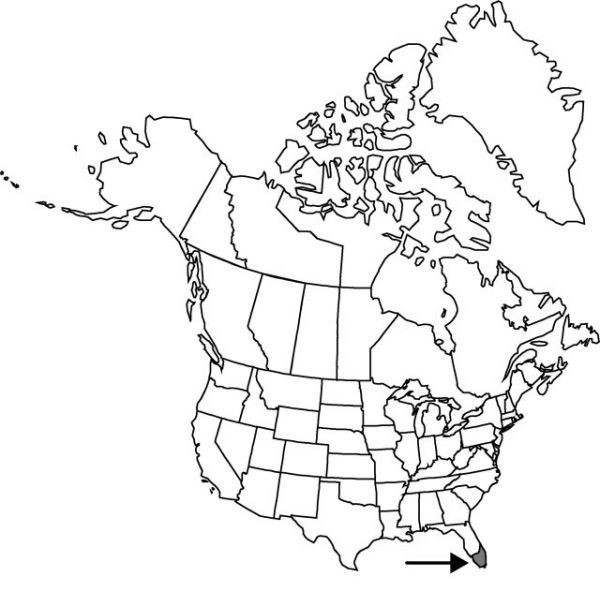Difference between revisions of "Prosthechea cochleata var. triandra"
N. Amer. Native Orchid J. 5: 18. 1999.
FNA>Volume Importer |
FNA>Volume Importer |
Revision as of 21:39, 16 December 2019
Plants to 60 cm. Stems: pseudobulbs slightly spaced, ovoid to ellipsoid, usually elongate, flattened, 3–15 × 1–3.5 cm. Leaves 1–3, oblong-lanceolate to linear-lanceolate, 5–40 × 1–6 cm. Inflorescences racemes, rarely paniculate, pedunculate, elongate, loosely few-flowered, to 45 cm, base with 1 or 2 spathes. Flowers not resupinate, successive, usually 3–4 open at a time, sometimes with capsules present, green to yellowish green with a few purplish spots near base; sepals and petals similar, hanging, twisted, linear-lanceolate, 25–35 × 3–6 mm; lip deep purple, orbiculate-cordate, concave, 1.2–2.3 × 1.5–3 mm, base whitish marked with conspicuous purple veins, calli 2, yellowish, cushionlike, apex sharply mucronate; anthers 3, middle anther with 4 pollinia, laterals with 2 each, orange; column short, stout, 6–10 mm, apex 5-toothed. Capsules 2–4 × 0.8–1.5 cm.
Phenology: Flowering Oct–Mar; fruiting Nov–May.
Habitat: In hammocks and cypress swamps, on trees and rocks
Elevation: 0–30 m
Discussion
The autogamous, 3-anthered Prosthechea cochleata var. triandra is the only variety found in Florida (Broward, Collier, Miami-Dade, Lee, Martin, Monroe counties, and Florida Keys), probably because of the absence of a pollinator. Throughout the rest of the distribution of the species, 3-anthered, abnormal individuals seldom occur, and no populations have been reported. The 1-anthered var. cochleata occurs in Mexico, West Indies, Central America, and northern South America.
Selected References
None.
